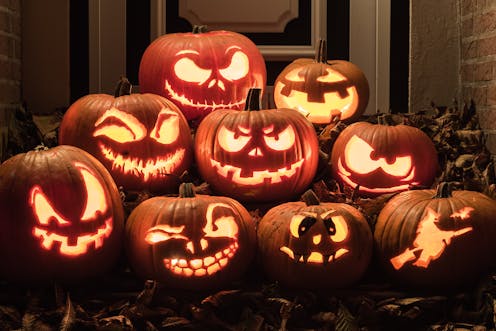Measuring the 'Halloween effect' – can retail investor optimism really affect stock returns?
- Written by Moritz Wagner, Lecturer, University of Canterbury

The upcoming spooky season is not only a favourite time for most kids (and a few adults), but also for share markets due to what’s been called the “Halloween effect” – often referred to as “sell in May and go away[1]”.
There is hardly a year investors and the media do not refer to the popular market wisdom suggesting higher stock returns in the months November through to April, compared with May through to October (that is, in the northern hemisphere’s winter and summer, but it also applies to southern hemisphere countries where the seasons are offset by six months).
With investors looking for a crystal ball to help with investing, predictable patterns can offer a guide for when to invest and when to sell. But has this pattern survived the financial volatility of the past two decades?
New research[2] shows this seasonal investment pattern is still alive and well in most stock markets around the world and, if anything, has become more pronounced in recent years.
Both the Halloween and January effect – the observation that stock prices of mainly smaller firms tend to increase in January more than in other months – are pervasive. These patterns seemingly provide guidance for the two most fundamental decisions when making an investment: what assets to buy or sell, and when.
Of course, such anomalies appear to be inconsistent with the common hypothesis that markets are efficient and that prices change randomly.
Finally answering the ‘why’
A recent analysis using stock returns and mutual fund flows[3] in the United States provides a simple answer to the nagging question of why these anomalies exist and why they have worked for so long. Previous explanations have largely been inconclusive.
Aggregate fund flows (the bars depicting money invested or withdrawn by investors) exhibit a similar calendar-based pattern as market returns (the lines). The returns are substantially higher during winter months than during summer months.
Read more: New economic index reveals the toll policy uncertainty can have on your investments[4]
Remarkably, in years where this is not the case – when summer flow is higher than winter flow – the winter excess returns are also negative.
Markets influenced by optimism or pessimism
When examined jointly, high average stock returns in winter months (Halloween effect) and in January (January effect) can be attributed to a large average influx of funds. After accounting for the effect of these increased fund flows, there are no seasonal factors affecting market returns anymore.
The study builds on earlier findings, providing strong evidence of the price-pressure effects from funds that expand their portfolios when they receive money from investors (cash inflow) and sell their shares when investors withdraw money (cash outflow).
In other words, large cash inflow induces fund managers to invest the excess cash, driving up the demand for stocks. When funds experience outflow, they liquidate investment positions, increasing the supply of stocks.
Such trading across funds can affect returns by temporarily driving stock prices away from their fundamental value. Interestingly, only flows to retail funds catering to individual investors, as opposed to institutional funds catering to high-net-worth or institutional investors, are seasonal.
The effect also appears to be short-lived and reverses within a few months and highlights the behavioural nature of the patterns observed in the market.
Overall, the interrelation between seasonal flows and stock returns originates from the buying and selling activities of perhaps overly optimistic or pessimistic individual retail investors.
Time to get into investing?
Some readers might ask whether it is still a good idea to buy stocks in the coming Halloween season, as the recent downturn in markets may appear like a good entry point.
However, the troublesome mix of record high inflation, rising interest rates and Russia’s war in Ukraine may ultimately result in a recession[5].
Read more: In the mood for sustainable funds? How feeling pessimistic can influence where investors put their money[6]
If retail investors then stay away from the market, seasonal patterns are less likely to materialise this time around. But there is no crystal ball to predict what is going to happen.
The best advice is to keep emotions out of investment decisions and focus on a broader strategy – look for long-term opportunities in the market rather than trying to time it.
References
- ^ sell in May and go away (www.investopedia.com)
- ^ New research (papers.ssrn.com)
- ^ stock returns and mutual fund flows (repec.canterbury.ac.nz)
- ^ New economic index reveals the toll policy uncertainty can have on your investments (theconversation.com)
- ^ ultimately result in a recession (www.euronews.com)
- ^ In the mood for sustainable funds? How feeling pessimistic can influence where investors put their money (theconversation.com)


















